Ants
Unwanted guests? Let our skilled professionals protect your family and home.
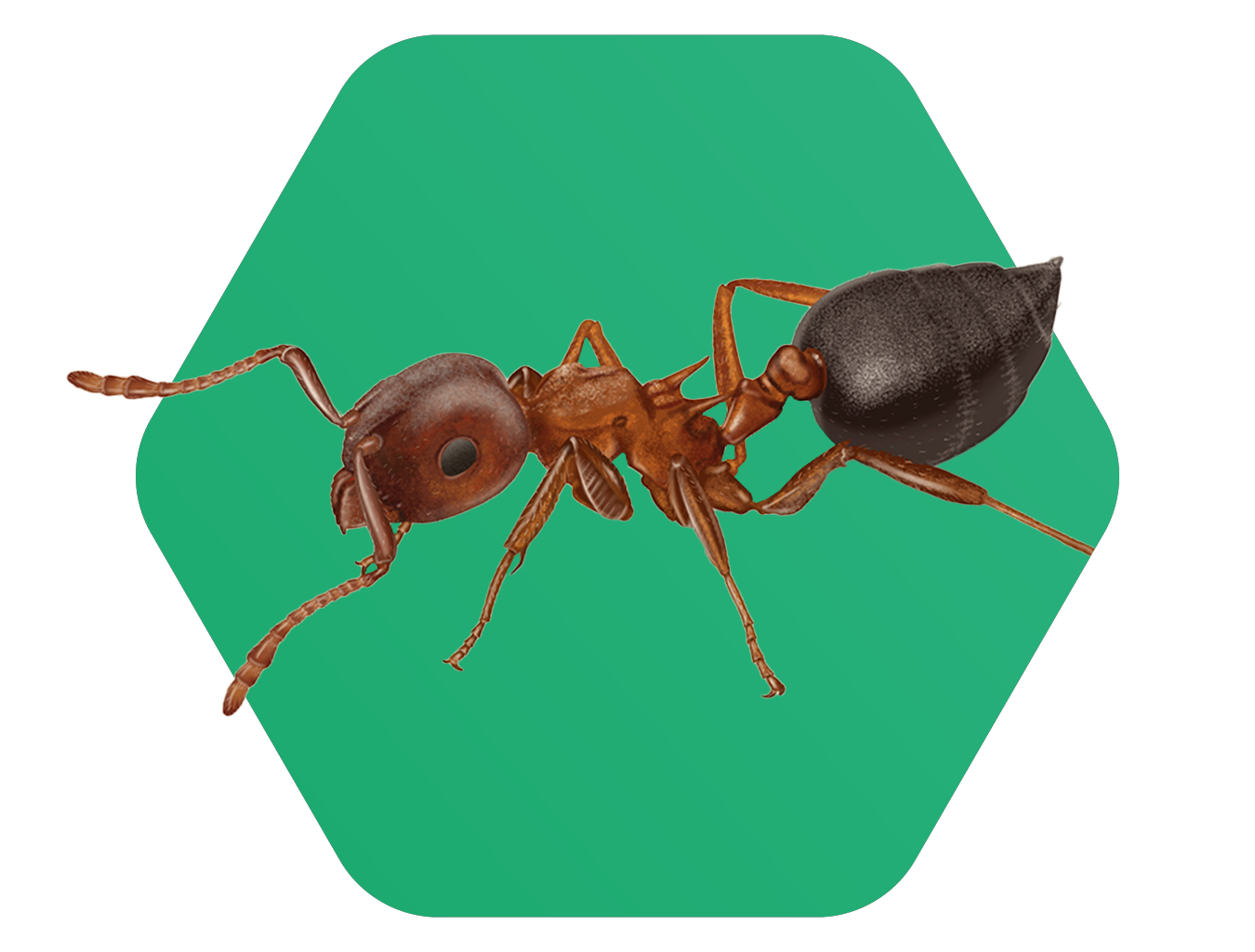
Acrobat Ants
Acrobat ants get their common name from their ability to acrobatically raise their abdomen over their thorax and head, especially when disturbed. There are various species of this ant found throughout the United States, even at altitudes of up to 8,000 feet. They often enter houses along vines that grow up against or near the wall of the house or along utility lines and can live in woodwork, particularly door and window frames.
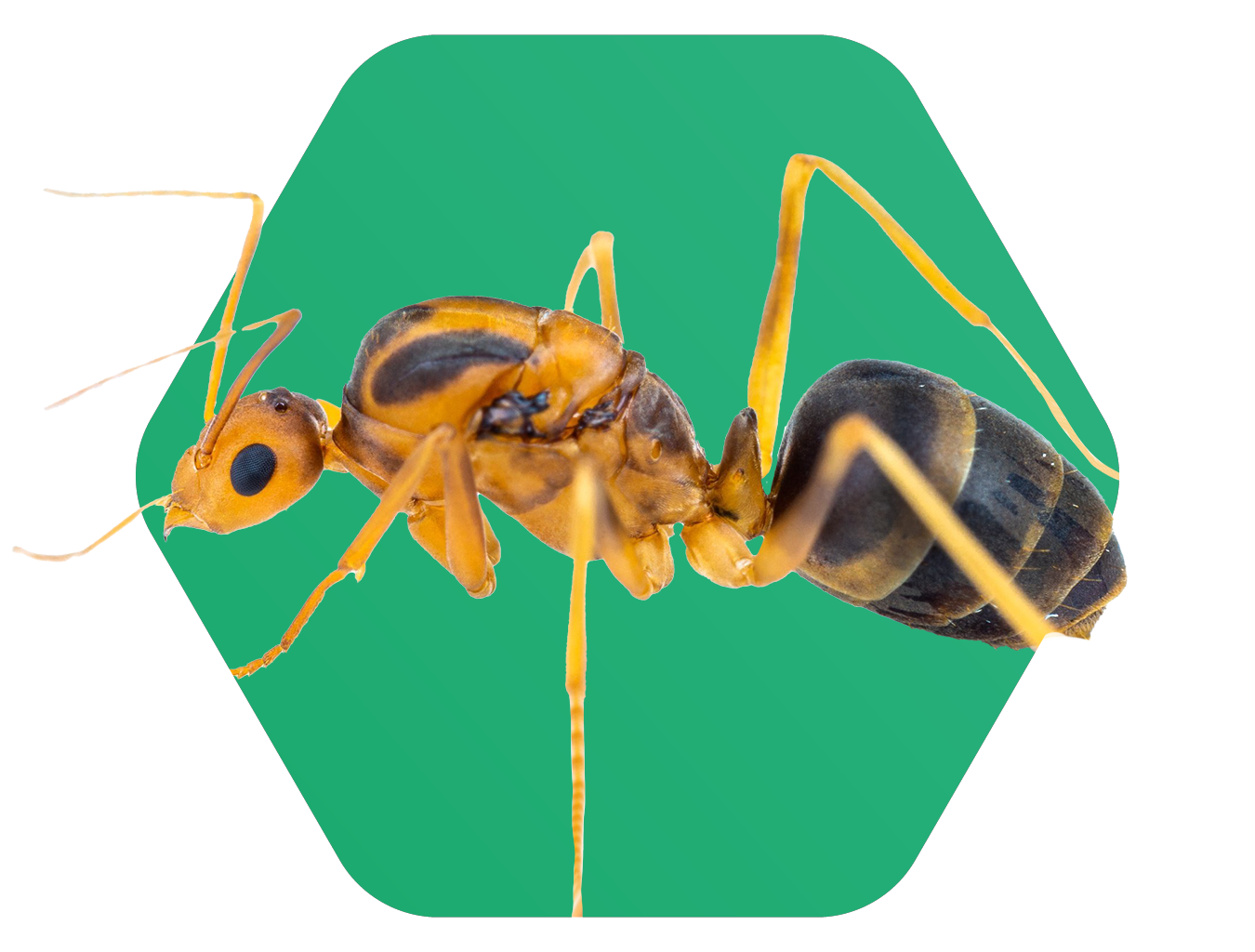
Crazy Ants
Crazy ants get their common name from the worker’s habit of running in an erratic, jerky manner when searching for food.
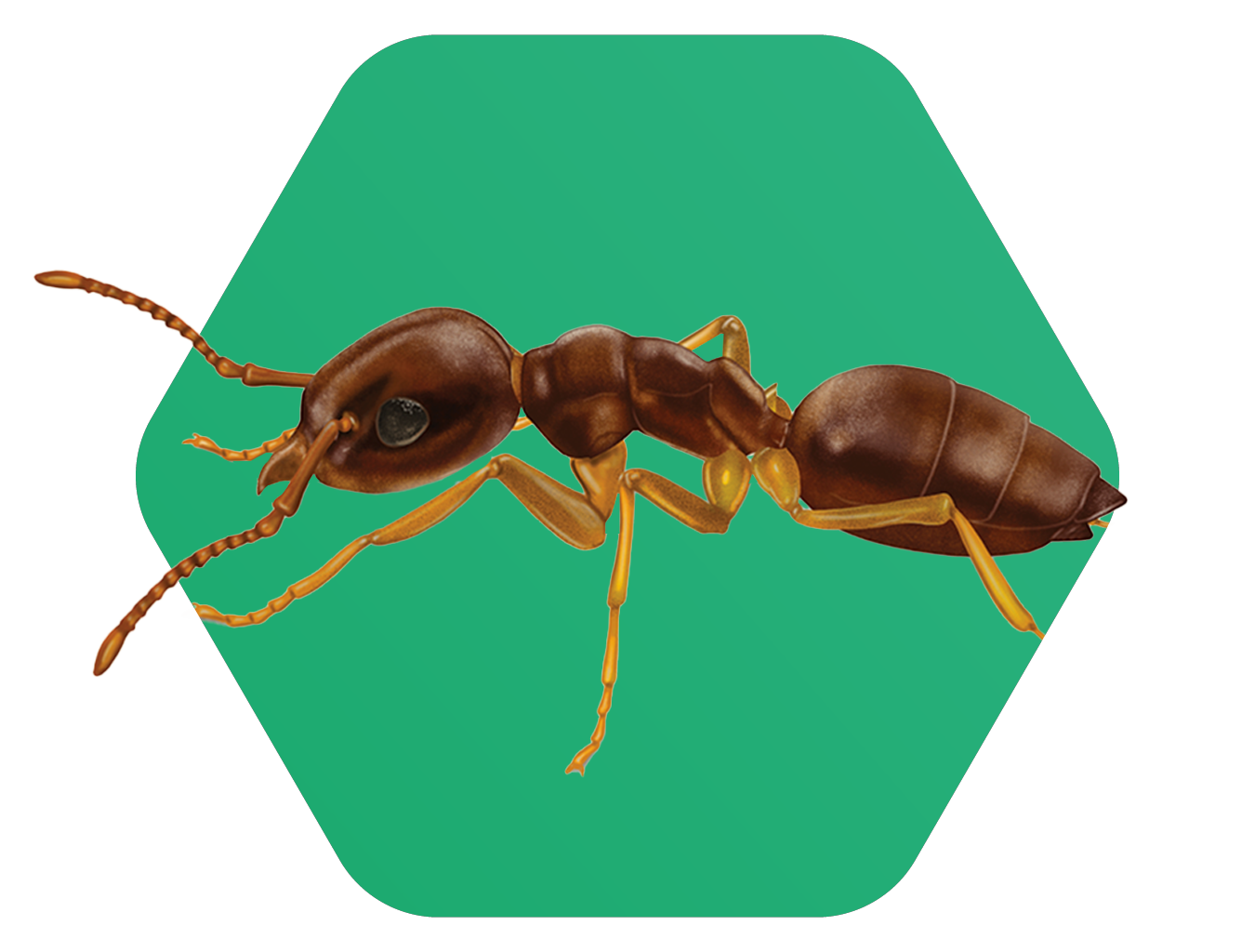
Odorous House Ants
The odorous house ant gets its name from the strong, rotten coconut-like smell it gives off when crushed. These tiny insects range in size from one-sixteenth of an inch to one-eighth of an inch long.
The odorous house ant is about 1/8″ and dark brown in color. This ant is so named because when crushed, the workers give off a rotten coconut odor. These ants normally nest outdoors under items on the ground, within landscape mulch, beneath loose bark on trees, under ground cover, in potted plants and other suitable voids. They are often found invading and nesting in homes. Odorous house ants may develop huge colonies containing thousands of workers and numerous queens making this species very difficult to control.
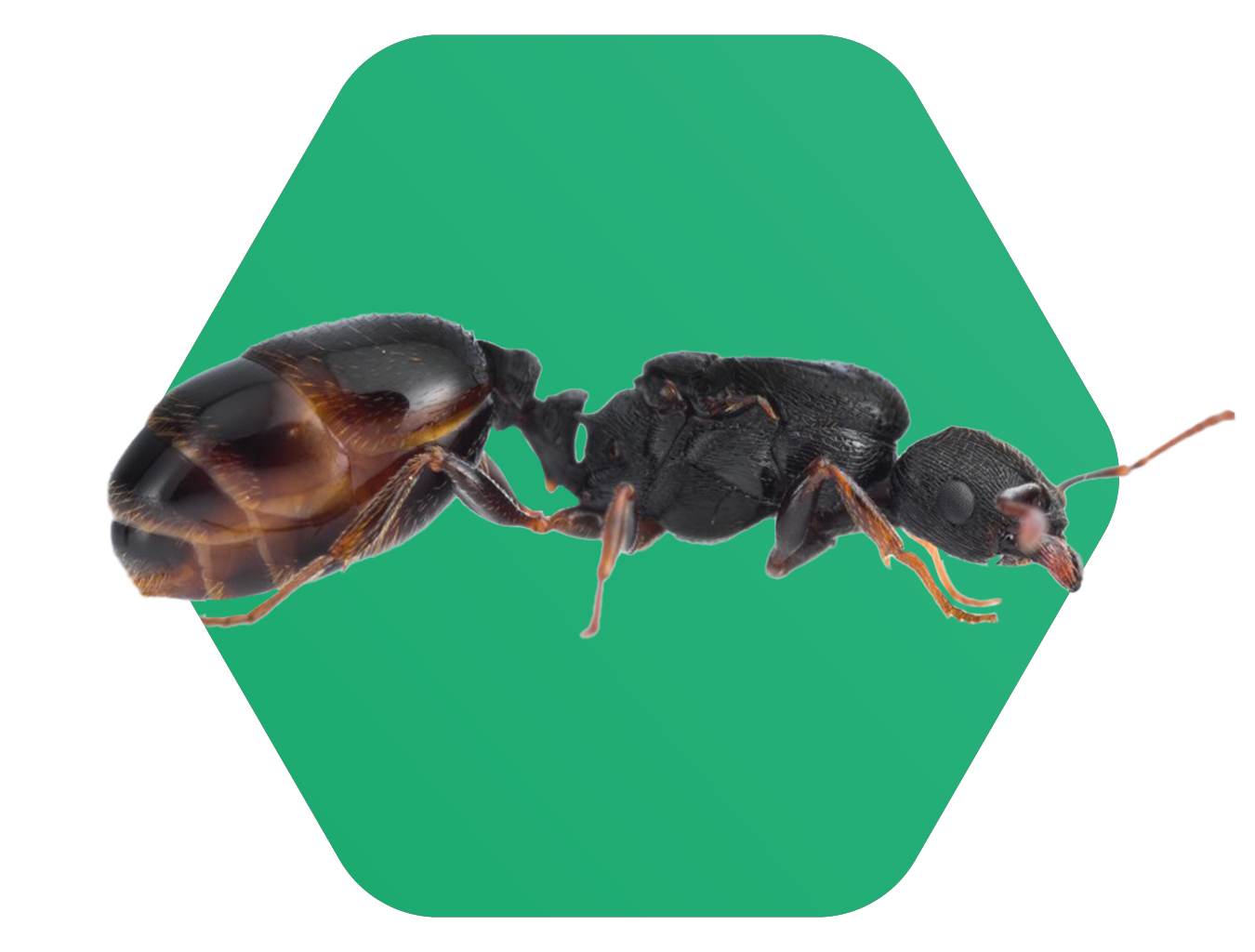
Pavement Ants
Pavement ants get their name because they make their nests in or under cracks in pavement. They can infest structures.
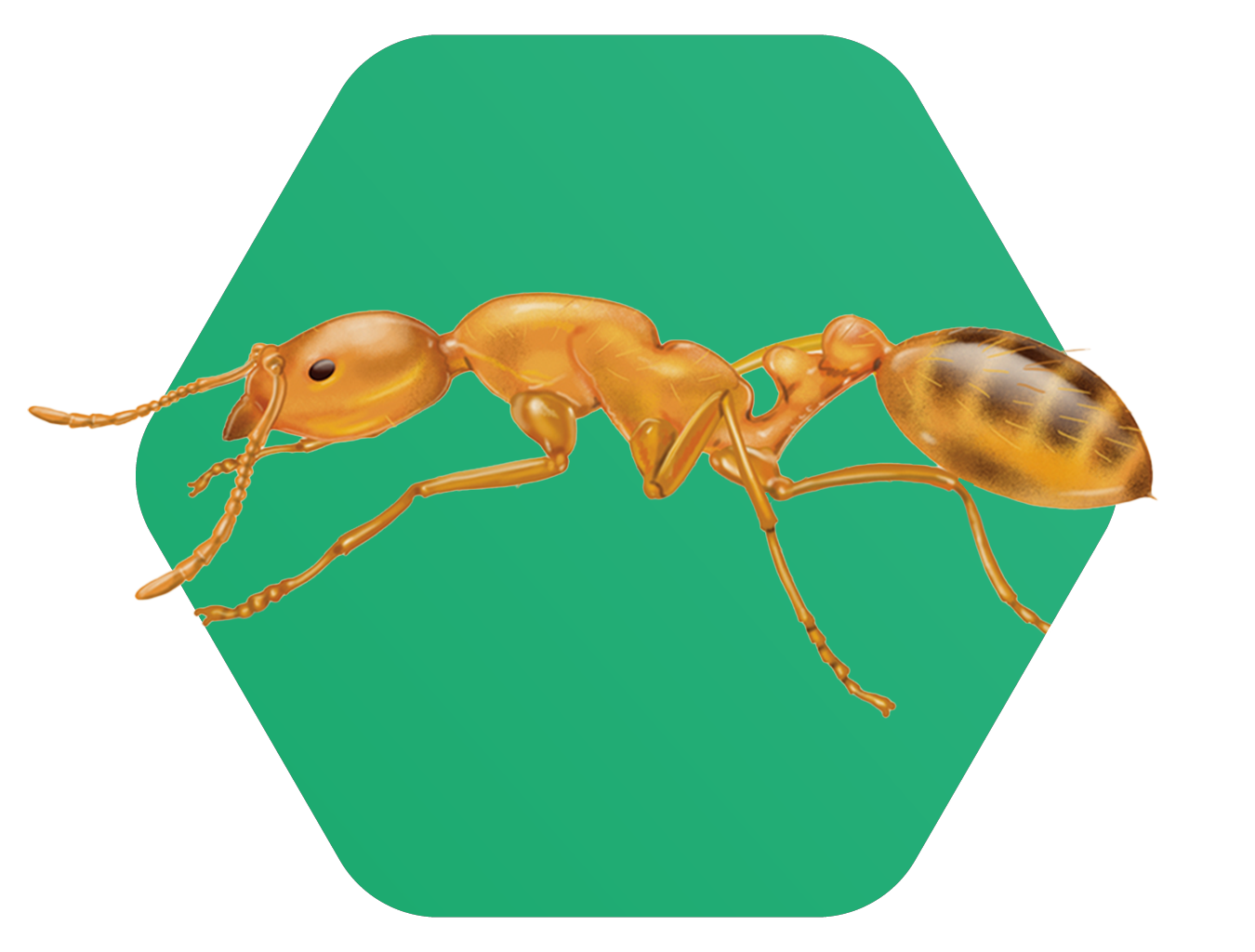
Pharaoh Ants
Pharaoh ants get their name from the mistaken belief that they were one of the plagues of Egypt during the time of Pharaohs. This species is thought to be native to Africa, but is currently found throughout the Unites States.
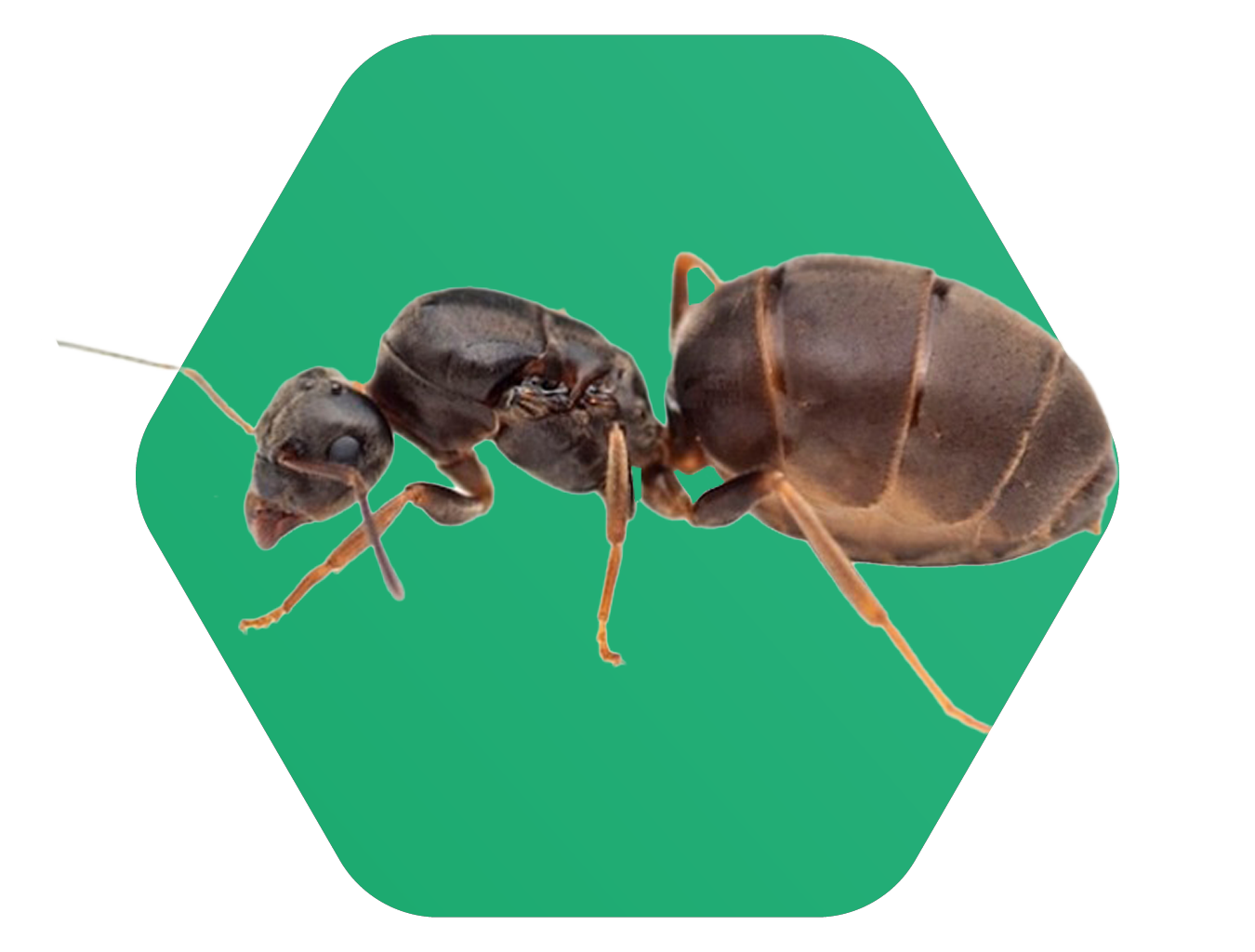
Corn Field Ants
The Cornfield Ant is a small, light to dark brown ant that often lives in cornfields and lawns, and is very abundant outdoors, in general. You can find them nesting in the soil under large stones, bricks, sidewalks and the like, as well as in and around rotting logs and stumps. They feed on dead insects and sweets, including honeydew that is secreted by aphids. They may find their way into homes in search of food, but they very rarely nest in homes. It is distributed throughout nearly all of North America, except for the extreme southern and southwestern portions, and is believed by some to be the most abundant ant on our entire continent.
This ant may bite, but generally causes little more than itching or slight stinging. Its nesting can cause small “craters” in the lawn, garden, or planter boxes.
It may, sometimes enter homes in search of food – particularly sweets, however, rarely will this ant ever be found nesting within a home or other structure. Cornfield ants will build their nests in exposed ground, with the mounds sometimes reaching exceptional dimensions and heights. It is sometimes confused with the carpenter ant, but since it is much less likely to enter homes, it needn’t be a concern – particularly if it is found very far from the home. If a cornfield ant is found in the home, it is likely to be indicative of a moisture problem, and the source should be found and corrected. This ant is sometimes a secondary pest, found to inhabit the galleries of carpenter ants that have been eliminated if the wood is not replaced or repaired. Their presence can then cause further deterioration of the wood.

Carpenter Ants
Carpenter ants are among the largest ants in Colorado. There are several species of carpenter ants that may be found infesting homes and other buildings. Normally workers are black or red and black in color and range in size from 3/8 to 1/2 inch. Winged queen ants may be as large as one inch. However, size is not a reliable characteristic to identify carpenter ants. Carpenter ants differ from termites by having dark-colored bodies, narrow waists, elbowed (bent) antennae, and if present, hind wings shorter than front wings. Carpenter ants are very common and are frequently seen in the open.
Carpenter ants feed on sources of protein and sugar. Outdoors, carpenter ants feed on living and dead insects. They are also very attracted to honeydew, a sweet liquid produced by aphids and scale insects. Aphids and scales feed on trees, shrubs, and other plants. Indoors, carpenter ants feed on meats, as well as syrup, honey, sugar, jelly, and other sweets. Carpenter ants DO NOT eat wood. They remove wood as they create galleries and tunnels.
Most foraging is done at night between sunset and midnight during spring and summer months. Sometimes workers travel up to 100 yards from a nest in search of food.
Carpenter ants damage wood by excavating and creating galleries and tunnels. These areas are clean, i.e. they do not contain sawdust or other debris, and are smooth, with a well sanded appearance.
The damage to wood structures is variable. The longer a colony is present in a structure, the greater the damage that can be done. If structural wood is weakened, carpenter ant damage can be severe.
Whether you are a homeowner, restaurant, industrial storage facility, or manufacturer, we can help. Our technicians are extensively trained.
Copyright © 2024 | Pet Solutions Plus | 9903 Titan Ct Unit #13 Littleton, CO 80125 | 720-583-0158 | Developed by Subsilio Digital
